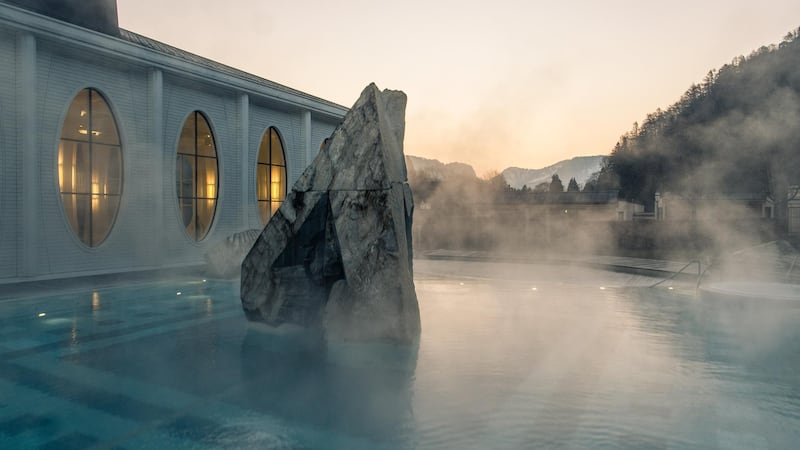"We're witnessing a shift. We're moving from the information age to the health age," Italian hotelier Aldo Melpignano told journalists recently. The owner of the Borgo Egnazia hotel and spa in Puglia, southern Italy, was introducing a five-day retreat based on the habits of the world's longest-living people.
As part of the experience, guests start the morning with yoga, go for a fast walk, work on their real-life, non-digital social network, do nothing for a bit, have a massage, then walk barefoot around the hotel’s organic farm to pick vegetables – for meals to be eaten only until they’re 80 per cent full.
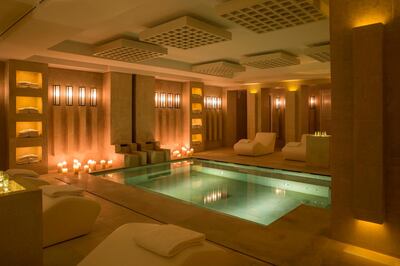
If Melpignano's "health age" comment is right, it's a testimony to how much spas have evolved in the past 20 years – not to mention the past 2,000. Tap "spa" into Google and you get 3.9 billion search results. Slightly overwhelming if you're just idly browsing for somewhere to spend a relaxing weekend. But it's evidence of how the word spa now embraces much more than its traditional meaning. That is: an aesthetically uplifting public space devoted to health and relaxation, built around a supply of naturally hot or heated mineral-rich spring water.
From laughter therapy to aura-cleaning
Spa is now the catch-all word embracing all manner of new wellness and self-care obsessions. These run the gamut from – deep breath – mindfulness, meditation, DNA testing, good sleep, gut bacteria, clean eating, colonics, boot camps, laughter therapy, crystal use, being wrapped in seaweed or mud, vitamin IV drips, Traditional Chinese Medicine (barely known these days in China, it is worth noting), Ayurveda, tai chi, qigong, alternative medicine, tree houses, Tibetan singing bowls, bioenergetics, transformational breathwork, essential oils, mala beads, reverence for plants, chakra-cleaning, aura-clearing, shamanism, chi nei tsang abdominal massage, fasting, vegetarianism, veganism and all kinds of yoga and Pilates and gym workouts, to – another deep breath – the widespread craving to disconnect, be outside and get back to nature.
From Antigua to Zanzibar, we now have an astounding selection of spas to choose from. And the next time we lie down on a massage bed, we might send a mental message of thanks across the centuries to the people to whom we most owe this great choice. The Romans.
Rome's spa legacy
Two thousand years ago, it was the Romans (and in particular the Roman soldiers) who, as they conquered and colonised their way around Europe, North Africa and the Mediterranean, spread the idea of the spa as an essential part of everyday life. No doubt, the soldiers were eager to have somewhere to heal their wounds, recover from their exertions and simply get warm and clean. Emulating the grand marble baths in Rome – improved versions of baths the ancient Greeks had erected, so sincere thanks to them, too – Roman soldiers built baths (and encampments) around natural hot springs wherever they came across them.
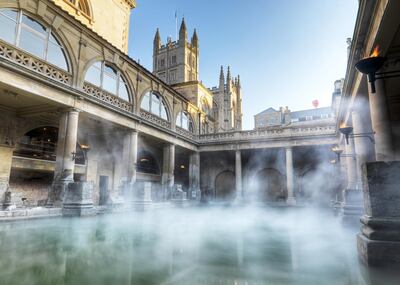
The ruins of many still exist today. So, of course, do many of the towns their encampments grew into. In some, such as Bath, England, you can still relax in the (now renovated) baths they dug, and enjoy the series of variously heated rooms – the tepidarium, caldarium and frigidarium – at the heart of every Roman spa.
No one is sure where the word spa comes from. Some think it an acronym for the Latin phrase Salus Per Aquam, health from water. But it was certainly the Romans who named a Belgian village Spa, after building baths around its hot springs. Over the centuries, Spa became so noted for the healing effects of this water – mineral-rich thanks to the rock it passed through before gushing from the ground – that from the 1300s, the name Spa began to be added to any place where people found bathing in or drinking the local spring waters beneficial.
How health farms became five-star retreats
Spas as we know them today, however – lavish, luxurious, with an ever-expanding menu of treatments, therapies and experiences – took off only in the 1980s. Until then, those spas that had survived the growing influence of the post-Second World War pharmaceutical industry (with its pill for every ill, obviating many people's instinct to seek a traditional spa cure) had become seen as the province of cranks. Sanatorium-type spas had thrived in Communist Eastern Europe, free for the workers sent there for a week each year to keep them factory-fit, but the Soviet Union's collapse in 1989 brought an end to many of them. In Britain, the 1970s "health farms" that spas had turned into catered mostly to women and the odd male actor who wanted to slim down. They involved diets of lettuce and cottage cheese, and days enlivened by a massage and a manicure.
The era of wild prosperity that the 1980s ushered in, thanks to banking deregulation and the booming oil industry, heralded a new generation of ultra-high-earning, super-stressed individuals desperate to escape and recharge somewhere smart. Suddenly, a spa was the answer to a lot of new problems.
A massive spate of hotel building was initiated, each with a now obligatory, better-than-the-rest spa. Older hotels quickly converted their disco or storage space into treatment rooms. Chiva Som opened in Thailand, showing the world what a detox destination spa could be – inspiring. Since 2000, it has been unthinkable for any five-star hotel not to have a spa.
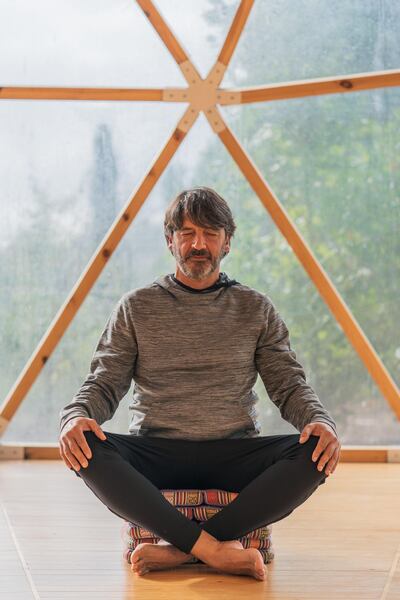
Today, of course, a massage and manicure are the least of it. As spas have hired or been launched by alternative practitioners, treatments have become evermore esoteric. At the fashionable MasQi, the remote 19th-century restored farmhouse in a national park in Spain, for instance, days start with yoga in the geodesic dome at 8.30am and end with meditation at 6pm, with sessions with the owner – a believer of reincarnation – and a therapist, who can sense what guests' organs are communicating, in between.
The medical route
Since an increasing number of people have realised that ailments once seen as the preserve of mainstream medicine – and thus medication – are more effectively treated by diet, medical spas and spas focused on the gut have gained a devoted following.
In Germany, Buchinger, the fasting spa run by the grandson of the founder, who started it after a two-week fast cured his rheumatoid arthritis, has such spectacular curative and weight-loss results, you’re lucky if you can book a room within the next six months. Focused on the importance of a properly functioning digestive system, meanwhile, the Mayr clinics in Austria and Germany have seen thousands of guests cured of complaints ranging from IBS to infertility to back pain.
“Numerous orthopaedic conditions originate in the gastrointestinal tract,” says Dr Peter Gartner of the Mayr-focused ParkHotel Igls. “Time and again, too, we have seen women who want to have a baby fall pregnant after a Mayr treatment.”
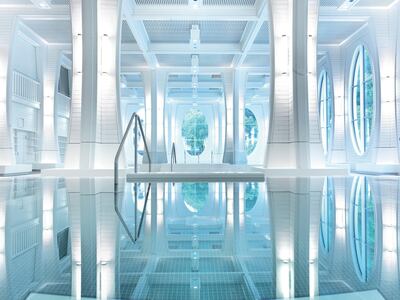
On a grander scale, the deeply luxurious Villa Stéphanie in Germany, Clinique La Prairie and Bad Ragaz spas in Switzerland, and Amanpuri in Thailand are all naturopathically inclined, and have allied themselves with top local mainstream-medical practices. That way, clients can benefit from the best of both worlds. They have a range of specialists and mainstream diagnostic equipment on hand, as well as alternative practitioners.
Hoteliers, once spa sceptics, have realised the money to be made in responding to guests’ keenness to maintain their zeitgeisty healthy lifestyles while travelling. Yoga mats in rooms, minibar chocolates replaced with nuts and dried fruit, and scales in the bathroom, have joined the old jogging maps. It’s become perilous to ignore the statistics.
"Tourism worldwide is growing at 3 per cent to 3.2 per cent. Wellness travel is growing at twice that," says Mia Kyricos of Hyatt's Wellbeing Ideation Lab. "People are taking more trips to enhance or maintain personal well-being. And wellness spans all generations now." According to the Global Wellness Institute, wellness is worth $4.2 trillion (Dh15.4tn), of which wellness tourism accounts for $639.4 billion, with the global medi-spa industry valued at $12bn.
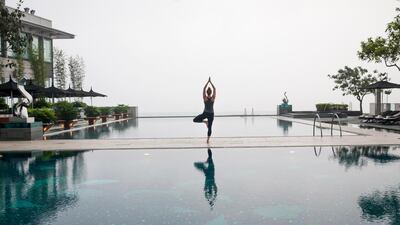
In New York, the Moxy East Village hotel offers morning rooftop meditation, as well as meditation videos on the in-room TVs. Gym group Equinox's first hotel, launched this summer at Hudson Yards, has cryotherapy chambers, sound therapy and soundproof rooms for "peak sleep". In Hong Kong, the Mandarin Oriental has introduced visiting specialists offering breathwork, lymphatic health workshops and Dao Liao knife massages. Four Seasons Hong Kong's Masters of Wellness programme has practitioners in aura reading and astrology, and monthly full Moon meditations – until recently the preserve of backpacker beach spas in Thailand.
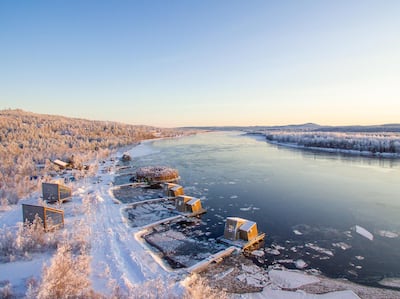
Communing with nature
Meanwhile, both spas and hotels are responding to a craving to get outside and into nature. At Austria's 400-year-old Forsthofgut Naturhotel, guests can hike into the forest for a massage on a table set up under the trees. In Gstaad, the non-profit Friends of Saanenwald is a new forest-bathing retreat, with campfires, saunas and swimming in mountain lakes. Sweden's remote Arctic Bath, unveiled last winter, has been entrancing guests with its ring of floating cabins. In Bali, guests at Amandari can sample sessions with a shaman and at Amankila, trek into the forest to pick medicinal herbs. Next year, Belmond's Good Living programme will have Self-Care for the Real World author and yoga teacher Nadia Narain at its Cap Juluca Caribbean resort, who will host sessions on the beach and by moonlight.
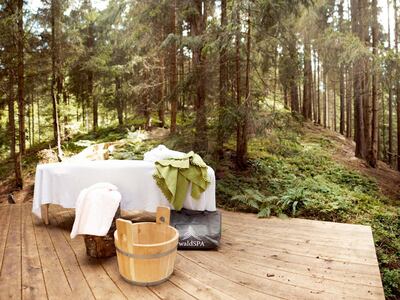
Simultaneously, there's been the arrival of sophisticated new city spas, set up for day-to-day maintenance. London's new Urban Retreat day spa – out of Harrods, now, and around the corner in Hans Crescent – has evolved into a holistic house of health focused on cleansing, inside and out. There are colonics, infrared saunas, nurse-administered IV infusions, a Japanese specialist in lymphatic drainage and cupping, and a top dermatologist. Mental cleansing, too, via one-on-one meditation (aka the new yoga) with soft-spoken yogi Catherine Turner.
Does all this sound new? Actually, as spas evolve, the circle is turning. What gets forgotten is how Roman spas also had gyms, libraries, concert spaces and, at the centre, the idea that these were public forums where one could socialise while relaxing and deep-cleaning oneself. They were also much larger than our spas. Some accommodated up to 1,600.
And when you consider the influence that health is having on big-scale developments such as the WorldCare Wellness village in Dubai, retirement communities in Florida built around a spa to prolong active existence, and new apartment blocks in cities from Paris and Madrid to Los Angeles and New York, where the lure is a spa, gym, pool, yoga room and green roof for growing herbs and vegetables, it's clear that Signor Melpignano is correct.
All hail the age of health. And, thanks again to those Roman soldiers.
